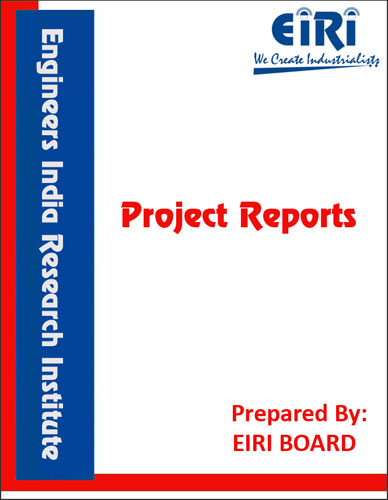JATROPHA (BIO DIESEL) CULTIVATION & EXTRACTION
The project report includes Present Market Position and Expected Future Demand, Market Size, Statistics, Trends, SWOT Analysis and Forecasts. Report provides a comprehensive analysis from industry covering detailed reporting and evaluates the position of the industry by providing insights to the SWOT analysis of the industry.
We can prepare PROJECT REPORT as per your INVESTMENT PLAN for BANK LOAN REQUIREMENT and INDUSTRY ANALYSIS. All reports are prepared by highly qualified consultants and verified by a panel of experts.
Have Query? Click Here to Chat
Industry Expert is Online, Chat with him for more detail.

Jatropha belonging to the family Euphorbiaceae is a multipurpose shrub or small tree of significant importance because of its several industrial and medicinal uses. The word ‘Jatropha’ is derived from two Greek words ‘Jatros’ meaning a ‘Doctor’ and ‘Trophe’meaning nutrition. It grows in a number of climatic zones in tropical and sub-tropical regions and can be grown in areas of low rainfall and problematic soil. Jatropha oil is a potential source of ‘biofuel’ in countries where the resources to import fossil fuel is poor. It could be served as a panacea for energy shortages in the future world. There is gap between the production and the use of petroleum fuels is presently met by imports from other countries. Therefore, it is obligatory on the part of India to go in for some alternative, renewable, and eco-friendly fuels that can be cultivated in the otherwise barren land available in the country. There is a great demand of bio-diesel oil in India as Govt of India is also promoting use of Biodiesels in India. In this respect, it may be mentioned that the government of India has identified jatropha as a possible and promising alternative to diesel. The biomass market will provide job opportunities for the local community. The carbon dioxide absorption is 8 Kg. per tree per Year and can be converted into Carbon Credit Certificates. EIRI have prepared the project report on Biodiesel. There are two process for oil extraction from jatropha seed – Mechanical, Manually 50% Electrically 60% – Chemical, Solvent Extraction – Hexane is mostly used – 48%-98% Extraction Efficiency – Cheap, Narrow Distillation Range. Biodiesel fuel has better properties than petro diesel fuel and have got tremendous demand; it is renewable, biodegradable, non-toxic, and essentially free of sulfur and aromatics. Biodiesel would be realistic fuel for future. Biodiesel has the good potential to economically, socially, and environmentally benefit communities as well as countries, and to contribute toward their sustainable development. The major challenges of biodiesel are its cost and availability of fats and oil resources.
Each ‘EIRI’ MARKET OVERVIEW CUM DETAILED TECHNO ECONOMIC FEASIBILITY REPORT (Complete Report) tentatively covers
• Introduction
• Properties
• BIS (Bureau of Indian Standard) Specifications & Requirements
• Uses & Applications
• Present Indian Market Overview/Position
• Export & Import Statistics Data
• Names and Addresses of Existing Units (Present Manufactures)
• List of Plant & Machineries
• Miscellaneous Items and Accessories
• Instruments, Laboratory Equipments and Accessories
• Electrification, Electric Load and Water
• Maintenance, Suppliers/Manufacturers of Plant and Machineries
• Manufacturing Process with Formulations (If applicable)
• Flow Sheet Diagram
• List of Raw Materials
• Availability of Raw Materials
• Requirement of Staff & Labour
• Personnel Management
• Skilled & Unskilled Labour
• Requirement of Land Area
• Built up Area
• Plant Layout
Along with financial details as under:
• Summary of Capital Cost of Project
• Land & Side Development Exp.
• Buildings
• Plant & Machineries
• Misc. Fixed Assets
• Technical Know how Fees & Exp.
• Preliminary Expenses
• Pre-operative Expenses
• Provision for Contingencies
Below mentioned financial statements (Annexure) will be for 5 to 10 Years
• Annexure:: Cost of Project and Means of Finance
• Annexure:: Output, Profitability and Cash Flow Chart
• Annexure:: Assessment of Working Capital requirements
• Annexure:: Sources of Finance
• Annexure:: Balance Sheets
• Annexure:: Break-Even Analysis and profitability analysis.
• Annexure:: Quantitative Details-Output/Sales/Stocks
• Annexure:: Sales Realisation
• Annexure:: Raw Material Cost
• Annexure:: Other Raw Material Cost
• Annexure:: Packing Material Cost
• Annexure:: Consumables, Store etc.,
• Annexure:: Employees Expenses
• Annexure:: Fuel Expenses
• Annexure:: Power/Electricity Expenses
• Annexure:: Repairs & Maintenance Exp.
• Annexure:: Other Mfg. Expenses
• Annexure:: Administration Expenses
• Annexure:: Selling Expenses
• Annexure:: Depreciation Charges – Profitability
• Annexure:: Depreciation Charges
• Annexure:: Interest and Repayment – Term Loans
• Annexure:: Tax on Profit
• Annexure:: Assumptions for Profitability workings
• Annexure:: Assessment of Working Capital



